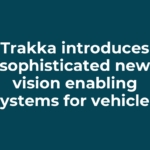Unicom Emergency Response Messaging System: LNG Plant
This article describes a system developed, supplied and installed by Unicom Pty Ltd for use in an LNG plant in the Middle East enabling messaging between different communication devices to achieve a seamless, timely exchange of critical plant information.
As Neil Young advises us, “rust never sleeps”. Such is the plight of many technology systems around the world. As soon as you take your new shiny state of the art widget out of the box, its updated replacement is anywhere from a thought in a bright mind to a prototype on the test bench. It could even be available at the same supplier that you just purchased your new shiny state of the art widget from! Like rust, technology never sleeps. These new widgets carry the promise of capability, speed, reliability and redundancy and with that allow the tech savvy of our word to provide us with capabilities which enable us to be more productive and therefore drive better business outcomes. However, as time progresses and systems continue to perform, upgrades are not on the agenda. And when “if it aint broke don’t fix it” applies, the rust starts. Rust can be undetectable until the structure gives way and you fall through the floor.
A Unicom client was recently presented with this unfortunate experience. A server installed and configured ten years ago started to become unreliable, and that degraded their Emergency Response Pager Messaging System. This system is used to coordinate maintenance and shift roster activities across a liquefied natural gas plant. The system also is a key component in the emergency evacuation process. So due to the critical nature of this communications platform it is easy to see that not having it available reliably was a major problem.
Our clients’ urgent initial request was for us to provide the resurrection of their existing system. The problem was that ongoing software development for the existing pager messaging system ceased at Windows 7. The software did not run on a machine configured with anything higher than Widows 7. Added to this, the software was tied to the machine it was running via a software key and the company that owned this software was a distant memory and therefore unable to provide solutions. In short, the client was in a pickle! Being an agent for this software back in the day, our engineering staff was able to provide a Windows 7 license to our client who used this to configure a new machine. We then advised them on the installation process for a backup of their software configuration including the software key, which we made during the initial installation ten years ago. Hey presto the client was back in business but acutely aware now of the risk they were faced with. Our clients’ next request was for us to develop and install a replacement pager messaging software system.
We had been working with the MobiCall product for some time and we viewed this as the solution. We just needed to develop a pager-messaging platform within it that met the clients’ criteria of dual redundancy and failover between multiple transmitters with alarm notification and hardware and software watchdogs etc., deliver, and install it on site immediately. There is nothing like a critical system delivery challenge to help you lose sleep! So original plans were dusted off and the lens of possibility was overlaid. As with many reviews of legacy communications systems that we see, it quickly became very apparent that we could offer a superior solution than the existing single level of service by integrating a number of communications platforms into the proposed solution. This was of great interest to our client. It is also an area that Unicom has developed a great deal of expertise in, the integration of systems into one platform where command, control and interoperability become available.
After a number of urgently conducted rapid conversations and system modelling, we presented our client with our proposal. It consisted of a staged approach as follows:
- Replace the existing system to return to them reliable and supportable operations
- Integrate phones, email and SMS messaging to the paging messaging system
- Upgrade hardware to include and deploy current technology offerings
- Deploy a system wide support agreement to manage and maintain serviceability of the entire solution well into the future
Their simple response was “when can we have stage 1?” This was backed up by an order for stage 1 and in that instant, we were at it! The next few days consisted of developing a hardware mirror system in the Unicom tech lab. This was used to test the evolution of the software pager messaging solution, which was developed on the MobiCall software messaging platform. In conjunction with this frenzy of activity, Project Management plans, Server and Client Hardware criteria, Factory Acceptance Test, and Site Acceptance tests documents were drafted and submitted to our client for review and approval.
Once we had a working solution we were off to site to install. Did I mention that Unicom is located in Melbourne Australia and that our client is in the Middle East? This fact along with the requirement to have a remotely supportable solution dictated the methodology of the solution. We designed the solution to include a virtual machine which would run the new MobiCall pager messaging software. This way Unicom could acquire real time snapshots of the working system and diagnose any issues on our mirror image hardware. Once resolved we would upload the new configuration to the client’s site and from there they could run it and confirm. If any issues still remained they could roll back to the previous known state and therefore suffer zero down time and have a constant set of known state backup configurations. This is just what you want if you intent to be serious about system support for a site on the other side of the planet.
The system proved to be a great success and we are already working on adding features such as alarm emailing, sending pager messages to phones as text and as speech and enabling pager messages to be sent via SIP using IP phones. As with many of these deployments once the client sees the bigger picture available through the full scope of an integrated messaging and workflow solution they start to see how they can coordinate their multiple disparate emergency communications systems and how they can control the escalation of response to events through this single platform.
The Customer now has a reliable mission critical emergency response alert system with dual redundancy and automatic fail over accessible from any customer web browser or telephone, supported 24/7 from Australia.


